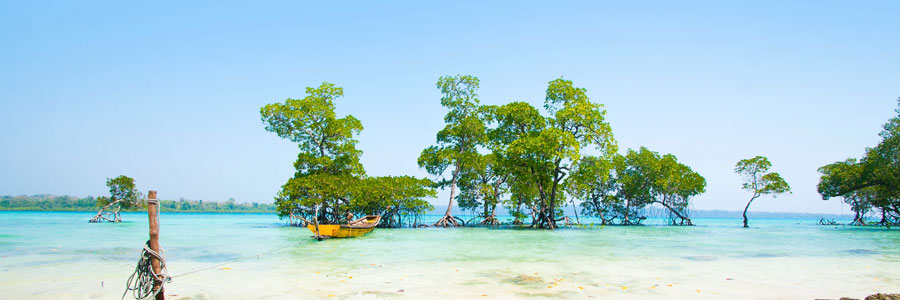
Diglipur: The Hidden Gem of North Andaman
Welcome to Diglipur – Nature’s Paradise in North Andaman!
If Port Blair is the heart of the Andaman Islands, then Diglipur is its wild and adventurous soul. Located in North Andaman, about 310 km from Port Blair, this lesser-explored paradise offers a breathtaking mix of pristine beaches, unique twin islands, dense forests, caves, and the highest peak of Andaman – Saddle Peak. If you’re looking for an offbeat, nature-immersed experience, Diglipur is where you need to be!
Why Visit Diglipur?
Explore Ross & Smith Islands – two islands connected by a sandbar, straight out of a dream!
Climb Saddle Peak, the highest point in Andaman, offers mesmerizing views.
Visit Alfred Caves, a network of 42 limestone caves, home to rare swiftlet birds.
Witness Kalpong River, the only river in Andaman and the site of a hydroelectric project.
Relax at the untouched beaches of Lamiya Bay, Kalipur, and Ramnagar.
Experience vibrant local culture – Diglipur is also called “Mini India”, with people from all over the country living in harmony.
A perfect spot for eco-tourism, wildlife, and photography enthusiasts.
How to Reach Diglipur?
Since all tourists arrive at Andaman via Port Blair, your journey to Diglipur will most likely start from there. Getting here requires some effort, but trust us, it's worth it!
By Road (Andaman Trunk Road – ATR)
-
Distance: 310 km
-
Travel Time: 10-12 hours (including stops)
-
Route: Port Blair → Jirkatang → Baratang → Rangat → Mayabunder → Diglipur
-
Journey Highlights:
-
Jarwa Reserve Forest: The only road route passes through the tribal reserve inhabited by the indigenous Jarwa people. Tourists must travel in a government-supervised convoy.
-
Baratang Island: Halfway to Diglipur, cross a creek on a government ferry before continuing the road journey.
-
Rangat & Mayabunder: Popular stopovers for the night to break the long journey.
-
Best Option: Hire a private cab or take a government bus from Port Blair.
-
By Sea (Ferry from Port Blair)
-
Government ferries operate between Port Blair and Diglipur.
-
Travel time: 8-12 hours.
-
Limited availability – booking is a must.
By Air (Helicopter Service)
-
A helicopter service runs from Port Blair to Diglipur (subject to availability and weather conditions).
-
Quickest but costliest option.
Need a hassle-free trip? Call 9733000592 / 593 / 594 for customized transport & tour bookings!
Top Attractions in Diglipur
1. Ross & Smith Islands – The Twin Wonders
Distance: 20-minute boat ride from Aerial Bay Jetty
Ross & Smith Islands are the crown jewels of Diglipur. These twin islands are connected by a natural white sandbar that appears at low tide, allowing visitors to walk between the two islands on foot!
Must-do:
-
Swim in the crystal-clear turquoise waters.
-
Snorkel to explore the rich coral life.
-
Click Instagram-worthy pictures on the sandbar!
2. Saddle Peak – Highest Point in Andaman
Height: 732 meters | Time Needed: 5-6 hours (trekking)
Love trekking? Saddle Peak, the highest point in Andaman, offers a challenging yet rewarding trek through dense tropical forests, waterfalls, and rare wildlife.
Trek Highlights:
-
Stunning panoramic views of the islands.
-
Spot exotic birds, butterflies, and deer.
-
The best time to visit: is October to April (pleasant weather).
3. Alfred Caves – Mysterious Limestone Caves
Distance: 35 km from Diglipur town | Time Needed: Half-day
A network of 42 limestone caves, these are home to swiftlet birds, whose nests are used for medicinal purposes. A fascinating mix of adventure, nature, and geology awaits here.
4. Kalpong River & Hydroelectric Project
Location: 20 km from Diglipur | Time Needed: 1 hour
This is the only river in Andaman and is home to the only hydroelectric project in the islands. Nature lovers and engineers alike will enjoy this unique landmark.
5. Kalipur Beach & Turtle Nesting Site
Distance: 15 km from Diglipur town | Time Needed: 2-3 hours
Want to see baby turtles hatch and crawl towards the sea? Visit Kalipur Beach during December to March, when four different turtle species (Olive Ridley, Leatherback, Green, and Hawksbill) lay eggs here.
6. Lamiya Bay Beach – Secluded Beauty
Location: Near Saddle Peak | Time Needed: 1-2 hours
A serene, less crowded beach offering stunning sunset views and rocky shores perfect for photography.
Where to Stay in Diglipur?
Budget Stays – 1200-2000 per night
Mid-Range Hotels – 2500-5000 per night
Eco-Resorts & Beachside Cottages – 6000+ per night
Pro Tip: Accommodation options are limited. Book in advance!
Call us at 9733000592 / 593 / 594 for hotel reservations.
Local Life & Culture in Diglipur
Diglipur is fondly called “Mini India”, as people from different states – Bengalis, Telugu, Malayalis, Tamils, and Hindi speakers – coexist here. The locals are warm and welcoming, primarily engaged in farming, fishing, and eco-tourism.
Final Thoughts: Is Diglipur Worth Visiting?
Absolutely! If you love nature, adventure, and offbeat experiences, Diglipur is a must-visit. With its pristine beaches, unique islands, caves, and trekking trails, it offers an authentic Andaman experience away from the tourist crowds.
Plan your hassle-free Diglipur trip with us! Call 9733000592 / 593 / 594 today!
